To craft compelling mobile photo stories, you'll need to master key composition techniques. Start by applying the rule of thirds across your series, using leading lines to guide viewers through images. Frame your shots consistently while maintaining a cohesive color palette. Incorporate repeated patterns and motifs for visual rhythm, and vary your perspectives to keep things dynamic. Create narrative flow through thoughtful composition, balancing negative space to emphasize key elements. Remember to alternate between close-ups and wide shots for context. These techniques will help you transform a simple set of photos into an engaging visual journey. Dive deeper to access the full potential of your mobile storytelling.
Rule of Thirds in Series
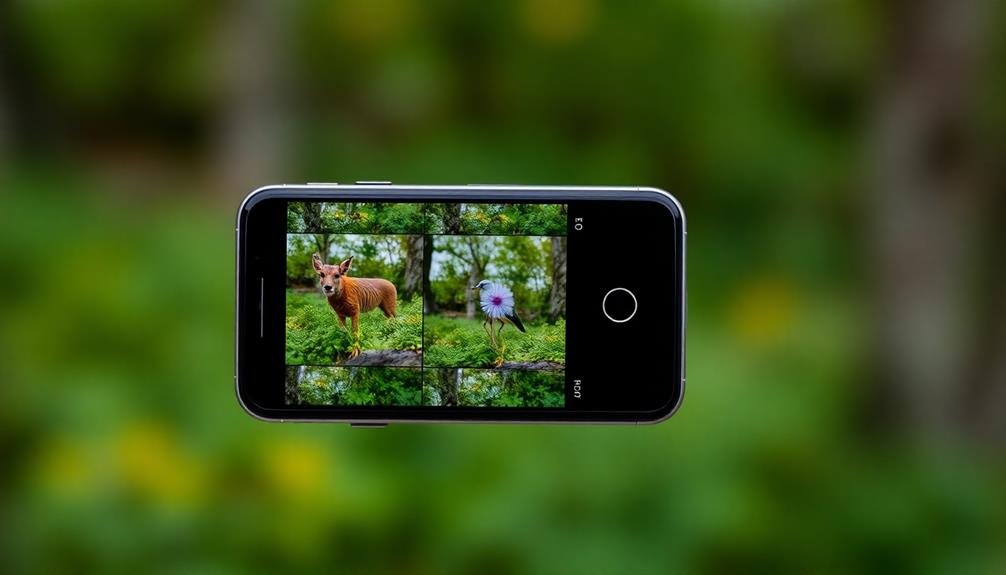
Three key principles make the rule of thirds effective in a photo series.
First, consistency across images creates a cohesive narrative. As you frame each shot, imagine a 3×3 grid overlaying your screen. Place important elements along these lines or at their intersections consistently throughout your series. This repetition guides viewers' eyes and establishes visual rhythm.
Second, use the rule to highlight different aspects of your story. In one image, position your subject in the left third; in another, shift it to the right. This variation maintains interest while still adhering to the rule. You can also alternate between horizontal and vertical thirds to add depth to your narrative.
Lastly, leverage negative space strategically. The rule of thirds naturally creates areas of emptiness. Use these to direct attention, convey emotion, or provide context. For instance, placing a small subject in the lower third can emphasize vastness or isolation.
Leading Lines Across Images
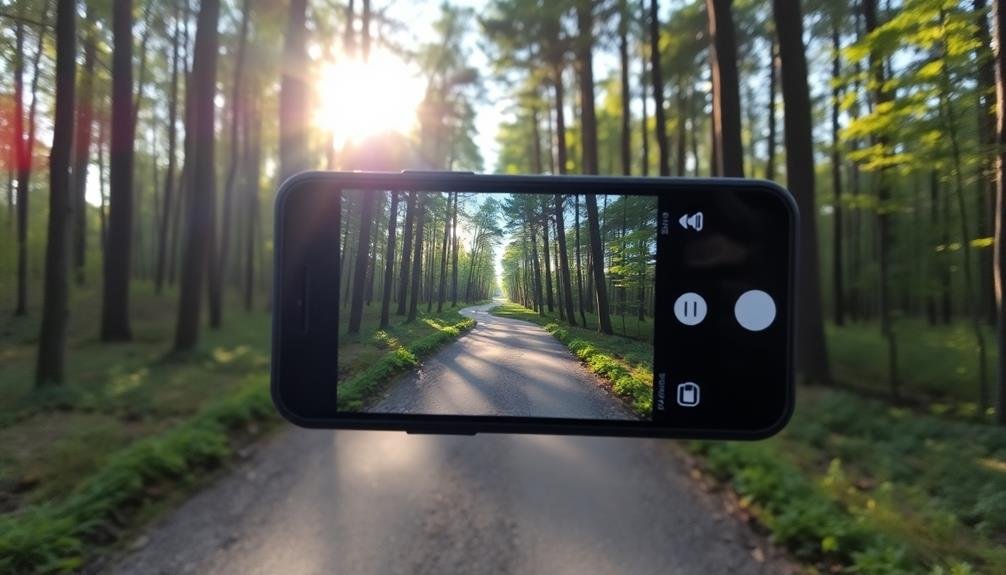
While the rule of thirds provides structure, leading lines offer dynamic movement across your photo series. These lines guide your viewer's eye through multiple images, creating a cohesive narrative flow.
To implement this technique, look for natural or man-made lines in your environment, such as roads, rivers, or architectural elements.
Start by identifying a strong leading line in your first image. Then, in subsequent photos, continue this line or introduce complementary lines that direct attention to your main subject. You can use diagonal lines for energy, curved lines for a softer feel, or straight lines for a sense of stability.
When shooting, position yourself to emphasize these lines. Try low angles to exaggerate road lines or high vantage points to capture winding paths. In post-processing, you can enhance leading lines by adjusting contrast or using selective editing tools.
Remember to vary your approach. Alternate between obvious and subtle leading lines to maintain visual interest.
Framing Within Sequential Shots
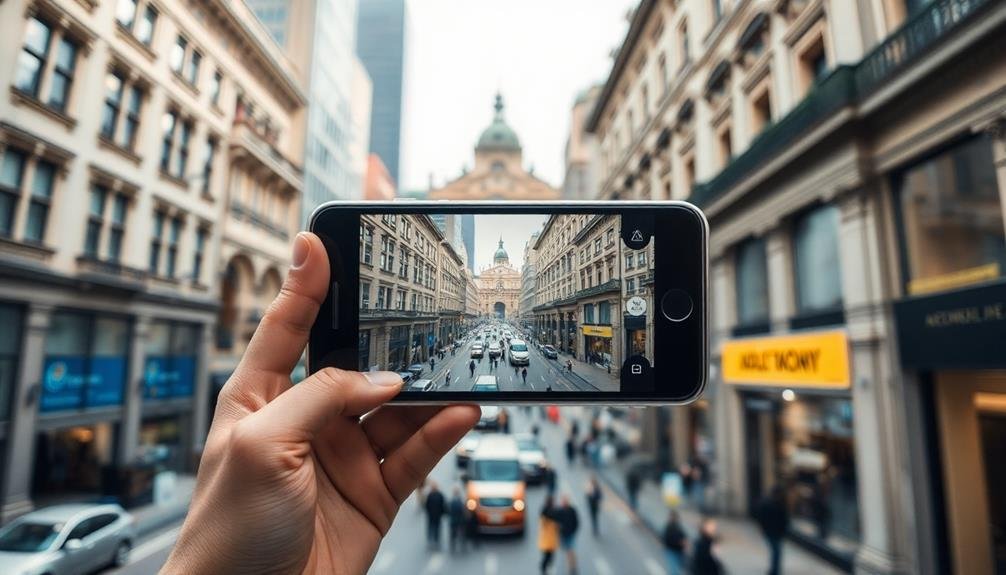
A frame within a frame can transform your sequential shots into an enchanting visual journey. When crafting mobile photo stories, use natural or architectural elements to frame your subjects across multiple images. This technique creates continuity and draws the viewer's eye to the main focus.
Start by identifying potential framing elements in your environment, like doorways, windows, or tree branches. As you capture your sequence, maintain the framing element's position while changing the subject or background. This approach adds depth and context to your narrative.
Experiment with different framing techniques:
| Technique | Description |
|---|---|
| Symmetrical | Center subject within frame |
| Off-center | Position subject using rule of thirds |
| Partial | Use frame on only one side of image |
| Layered | Incorporate multiple frames |
| Dynamic | Change frame size or shape across sequence |
Consistent Color Palette
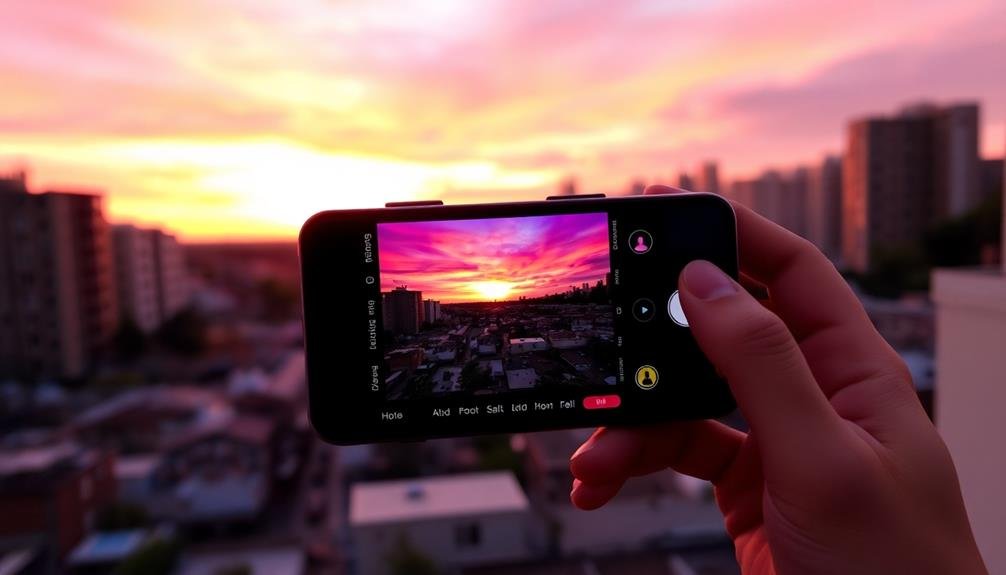
When creating mobile photo stories, you'll want to establish a consistent color palette to enhance visual coherence.
Start by choosing complementary hues that work well together, drawing from basic color theory principles like the use of analogous or triadic schemes.
You can further elevate your story's impact by selecting color combinations that evoke specific moods, such as warm tones for a cozy atmosphere or cool blues for a calming effect.
Choosing Complementary Hues
Creating a visually appealing photo story starts with choosing complementary hues for a consistent color palette. To achieve this, you'll need to understand color theory and how different hues interact.
Start by selecting a primary color that dominates your story's theme. This could be based on your subject matter, location, or desired mood.
Once you've chosen your primary color, identify its complementary color on the color wheel. These pairs, such as blue and orange or purple and yellow, create striking contrasts that can add depth to your images.
You can also opt for analogous colors, which are adjacent on the color wheel, for a more harmonious look.
Consider using a color palette app or tool to help you select and save your chosen hues. As you shoot, look for elements in your environment that match your palette. This might mean waiting for the right lighting conditions or positioning your subject against complementary backgrounds.
Don't be afraid to experiment with different combinations, but maintain consistency throughout your story.
Color Theory Basics
Understanding color theory basics is essential for developing a consistent color palette in your mobile photo stories. By mastering these principles, you'll create visually cohesive and compelling narratives that captivate your audience.
Start by familiarizing yourself with the color wheel, which showcases primary, secondary, and tertiary colors. This tool will help you identify complementary, analogous, and triadic color schemes, allowing you to make informed decisions about your photo compositions.
When crafting your mobile photo stories, consider the following color theory basics:
- Temperature: Warm colors (reds, oranges, yellows) evoke energy and excitement, while cool colors (blues, greens, purples) create a calm, serene atmosphere.
- Contrast: High contrast between colors can draw attention to specific elements, while low contrast creates a more harmonious feel.
- Saturation: Vibrant, highly saturated colors make bold statements, whereas muted tones convey subtlety and sophistication.
- Color psychology: Different colors evoke specific emotions and associations, so choose wisely to reinforce your story's mood and message.
Mood-Enhancing Color Schemes
Building on these color theory fundamentals, you can now harness mood-enhancing color schemes to create a consistent color palette for your mobile photo stories.
Start by selecting a dominant color that aligns with your narrative's mood. For warmth and energy, opt for reds, oranges, or yellows. Cool blues and greens evoke calmness and serenity, while purples suggest luxury or mystery.
Once you've chosen your primary color, use complementary or analogous colors to build a cohesive palette. Complementary colors, found opposite each other on the color wheel, create vibrant contrasts. Analogous colors, which sit next to each other, offer a more harmonious feel.
Apply your chosen palette consistently across your photo series, adjusting white balance and editing settings to maintain uniformity.
Consider the emotional impact of color intensity and saturation. Bright, saturated colors convey enthusiasm and boldness, while muted tones suggest sophistication or nostalgia.
Don't forget about neutrals – they can provide balance and emphasize your chosen mood colors. By thoughtfully applying these color schemes, you'll create a visually cohesive and emotionally resonant mobile photo story that captivates your audience.
Repeated Patterns and Motifs

Repeated patterns and motifs can transform your mobile photo stories from ordinary to extraordinary. They create visual rhythm, emphasize themes, and guide the viewer's eye through your narrative.
When you're crafting your photo story, look for recurring shapes, colors, or objects that can tie your images together.
To effectively use repeated patterns and motifs:
- Identify a central theme or element that resonates with your story's message.
- Seek out this element in different settings or contexts throughout your shoot.
- Experiment with various compositions to highlight the pattern or motif.
- Use editing tools to enhance the repetition subtly across your photo series.
Don't limit yourself to obvious repetitions. Subtle echoes of shapes, textures, or colors can create a cohesive feel without being overbearing.
You might use architectural elements, natural forms, or even specific poses or gestures to create continuity.
Varied Perspectives in Sequence
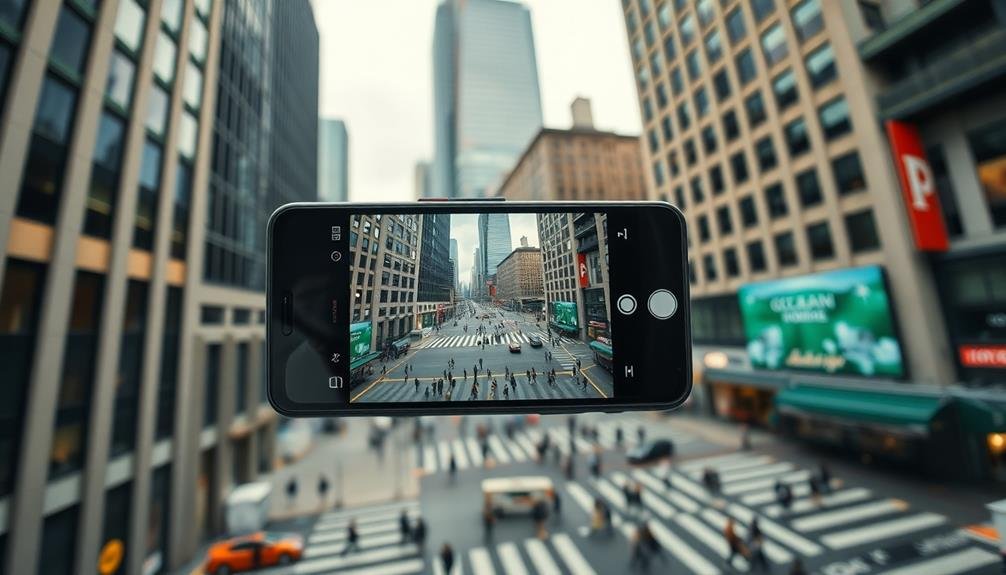
You can create compelling visual narratives by using angle progression storytelling in your mobile photo sequences.
Start with a close-up shot of your subject, then gradually widen your perspective with each subsequent image to reveal more of the surrounding environment.
This technique allows you to guide your viewer's eye from intimate details to broader contexts, effectively unfolding the story through a series of varied perspectives.
Angle Progression Storytelling
Angle progression storytelling offers a dynamic approach to mobile photography by capturing a subject from multiple viewpoints in sequence. This technique allows you to create a narrative arc that guides viewers through different perspectives of your subject, revealing its various facets and dimensions.
To master angle progression storytelling, consider these key elements:
- Start with an establishing shot: Begin with a wide-angle view to set the scene and provide context.
- Move closer: Gradually tighten your frame, focusing on specific details or features of your subject.
- Change your position: Shift your vantage point to capture unique angles, such as low or high perspectives.
- End with impact: Conclude your sequence with a powerful shot that leaves a lasting impression.
As you experiment with this technique, you'll find that it's particularly effective for showcasing architecture, landscapes, and even portraits.
By varying your angles, you're not just presenting a series of images; you're crafting a visual journey that engages viewers and keeps them interested throughout your photo story.
Remember to maintain a logical flow between shots, ensuring each image builds upon the previous one to create a cohesive narrative.
Subject-to-Environment Perspective Shifts
Perspective shifts breathe life into mobile photo stories by alternating between close-up shots of a subject and wider views of its surroundings. This technique creates a dynamic visual narrative that engages viewers and provides context.
To implement subject-to-environment perspective shifts, start with a tight shot of your main subject, capturing details and emotions. Then, zoom out or step back to reveal the broader setting.
As you progress through your story, continue this pattern of close-ups and wide shots. For example, when photographing a street performer, begin with a close-up of their hands playing an instrument, followed by a wider shot showing the crowd gathered around. Next, zoom in on a spectator's face, then pan out to showcase the entire street scene.
This approach allows you to guide your audience's attention, emphasizing important elements while providing a sense of place. It also helps maintain visual interest throughout your photo series.
Remember to vary the focal lengths you use and experiment with different angles to create a diverse and engaging sequence of images that tell a complete story.
Narrative Flow Through Composition
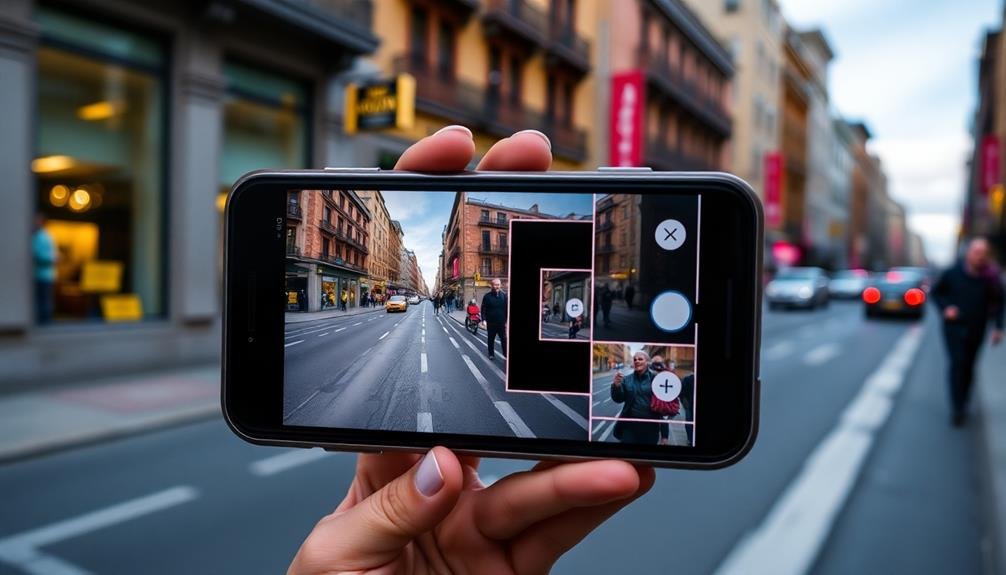
Composition techniques play an essential role in creating a narrative flow within mobile photo stories. You'll want to carefully consider how each image connects to the next, guiding your viewer through the story you're telling. By using consistent visual elements, leading lines, and thoughtful framing, you can create a seamless shift from one photo to the next.
To enhance the narrative flow through composition, consider these techniques:
- Use repeating shapes or colors to link images
- Employ the rule of thirds to create balance and visual interest
- Utilize negative space to draw attention to key elements
- Experiment with different angles to provide varied perspectives
As you compose your shots, think about how each image contributes to the overall story. You can create a sense of progression by gradually shifting focus or changing the scale of your subjects.
Don't be afraid to mix close-ups with wide shots to provide context and detail. Remember, the goal is to keep your viewer engaged and moving through your photo story.
Balancing Negative Space
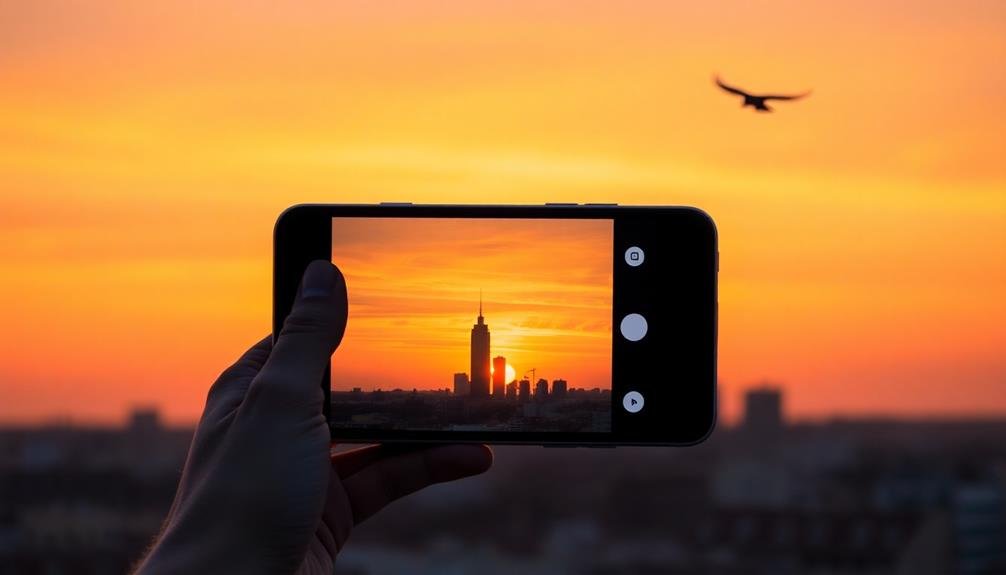
In the domain of mobile photo storytelling, negative space can be a powerful tool for enhancing your narrative. It's the area surrounding your main subject that, when used effectively, can draw attention to the focal point and create a sense of balance in your composition.
To master negative space, start by identifying the key elements in your scene. Then, consider how you can use the surrounding emptiness to emphasize these elements.
Don't be afraid to leave large portions of your frame unoccupied. This technique can create a striking visual impact and guide the viewer's eye to the most important parts of your image.
Experiment with different angles and perspectives to find the most effective use of negative space. Sometimes, shifting your position slightly can dramatically alter the balance between your subject and its surroundings.
Pay attention to lines, shapes, and textures in the negative space that might complement or contrast with your main subject.
Frequently Asked Questions
How Can I Effectively Use Depth of Field in Mobile Photo Stories?
To effectively use depth of field, you'll want to tap on your subject to focus. Then, adjust the aperture setting if available. This will blur the background, drawing attention to your main subject and creating visual interest.
What Are the Best Apps for Editing Mobile Photo Series?
You'll find several excellent apps for editing mobile photo series. Try Snapseed, VSCO, or Lightroom Mobile for powerful tools. Adobe Spark and Unfold are great for creating cohesive stories. Don't forget Instagram's built-in editing features, too.
How Do I Maintain Image Quality When Sharing Mobile Photo Stories Online?
To maintain image quality when sharing mobile photo stories online, you'll want to use high-resolution settings, avoid over-compression, and choose platforms that support large file sizes. Consider using cloud storage services for uncompressed sharing when possible.
Can I Mix Portrait and Landscape Orientations in a Mobile Photo Story?
Yes, you can mix portrait and landscape orientations in your mobile photo story. It'll add visual variety and interest. Just guarantee you maintain a cohesive flow and consistent styling to keep your story engaging and easy to follow.
How Many Photos Should Be Included in a Typical Mobile Photo Story?
You'll typically want to include 5-10 photos in a mobile photo story. It's enough to tell a narrative without overwhelming viewers. Remember, quality trumps quantity. Choose your best shots that effectively convey your story's essence.
In Summary
You've now got a toolkit for crafting compelling mobile photo stories. Remember, it's not just about individual shots, but how they work together. Apply the rule of thirds, use leading lines, and frame your subjects consistently. Create a cohesive color palette and look for repeating patterns. Don't forget to vary perspectives and balance negative space. Most importantly, let your composition guide the narrative flow. Now go out and tell your visual stories!





Leave a Reply